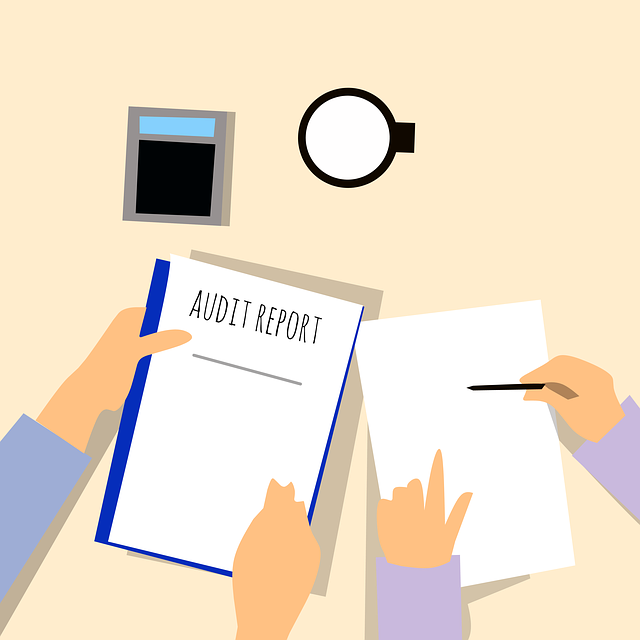An internal link audit is essential for optimizing site structure and SEO. It involves identifying key pages, analyzing content and user behavior, and strategically integrating links to enhance engagement. Focusing on anchor text diversity and contextual relevance ensures search engine visibility and improves user experience. Tools like Google Search Console aid in fixing broken links, assessing relevance, and optimizing navigation. By following a comprehensive audit strategy, marketers can boost SEO performance and create a seamless user journey through effective internal linking.
Marketers seeking to optimize their website’s structure and enhance user experience should focus on strategic internal linking. This powerful technique connects relevant pages, improving crawlability and boosting search rankings. In this article, we’ll guide you through performing a comprehensive internal link audit using proven strategies like identifying key pages, diversifying anchor text, evaluating contextual relevance, fixing broken links, prioritizing content, and implementing changes with SEO best practices.
- Identify Key Pages for Internal Linking
- Analyze Anchor Text Diversity
- Evaluate Link Contextual Relevance
- Uncover Broken Links and Redirections
- Prioritize Content for Interlinking
- Implement Changes with SEO Best Practices
Identify Key Pages for Internal Linking

When conducting an internal link audit, identifying key pages is a crucial first step. Marketers should focus on pages that are both popular and relevant to their target audience. These could be blog posts with high traffic, product or service landing pages, or guides that offer comprehensive solutions to common customer problems. By understanding which pages already resonate with your audience, you can strategically place internal links to boost user engagement and SEO.
Using an internal link audit tool can help uncover these key pages. Analyze page content, search terms, and user behavior to pinpoint the most valuable assets on your site. Once identified, optimize these pages by weaving in relevant internal links that direct users to related content or essential resources within your site. This not only enhances the overall site structure but also provides a richer experience for visitors, encouraging them to explore more of your offerings.
Analyze Anchor Text Diversity

One effective way to optimize site structure for better search engine visibility is through an internal link audit, which includes analyzing anchor text diversity. This process involves examining the links within your website to ensure a varied and natural usage of keywords in anchor texts. A diverse anchor text portfolio signals to search engines that your site’s content is relevant and valuable, thereby enhancing its SEO.
By conducting a thorough internal link audit, you can identify areas where anchor texts might be repetitive or over-optimized. An effective strategy involves using a mix of generic keywords, branded terms, and even random text (e.g., “read more”). This not only boosts the overall SEO of your site but also provides a better user experience by guiding visitors to relevant content seamlessly. Implement these practices in your internal link audit tutorial to improve your website’s performance both internally and in search engine rankings.
Evaluate Link Contextual Relevance

When conducting an internal link audit, evaluating the contextual relevance is a crucial step. This involves scrutinizing each link’s placement and its connection to the linked page’s content. Marketers should ask themselves if the anchor text accurately reflects the destination page’s topic or purpose. For instance, a blog post about SEO best practices shouldn’t have internal links pointing to a product page unless that product directly relates to the topic at hand. Contextual relevance ensures users and search engines alike understand the relationship between pages, enhancing the overall user experience.
A thorough internal link audit tutorial would include tips on identifying low-quality or irrelevant links. Tools like SEO audits can highlight these issues, allowing marketers to refine their site structure. By removing or replacing poorly contextualized links with more relevant ones, you optimize your internal link audit optimization process. This not only improves the site’s navigation but also boosts search engine visibility and user engagement.
Uncover Broken Links and Redirections

To enhance site structure through smart internal linking, marketers should begin with a thorough internal link audit. This process involves uncovering broken links and redirections, which can significantly impact user experience and SEO performance. Tools like Google Search Console and specialized internal link audit tools can help identify these issues effectively.
By conducting an internal link audit, marketers gain valuable insights into the current state of their site’s connectivity. It provides tips on optimizing link anchor text, ensuring contextual relevance, and improving overall site navigation. Through these measures, the internal link audit SEO optimization process not only fixes broken links but also enhances page authority distribution, leading to better search engine rankings and improved user engagement.
Prioritize Content for Interlinking

Marketers aiming to optimize their site structure through internal linking should start by conducting a thorough internal link audit. This process involves evaluating all the pages on your website and understanding how they are connected to one another. Prioritizing content for interlinking means identifying key pages that offer valuable information, have high search engine visibility, or serve as crucial hubs within your site’s architecture.
An effective internal link audit tutorial will guide you through several steps: assessing anchor text diversity, ensuring a logical flow of links, removing broken or redundant connections, and leveraging semantic relevance. By implementing these best practices, you can enhance the overall user experience, improve website navigation, and ultimately optimize your site for both users and search engines. This internal link audit strategy will not only boost your site’s structure but also contribute to better SEO performance through improved crawlability and page authority distribution.
Implement Changes with SEO Best Practices

When implementing changes to your site structure through smart internal linking, it’s crucial to adhere to SEO best practices. Begin by conducting a thorough internal link audit to identify broken or low-performing links. This process involves evaluating the context and relevance of each link, ensuring that they point to valuable content that enhances user experience. Using tools like Google Search Console and PageSpeed Insights can help you uncover issues and optimize your site for better search engine visibility.
For an effective internal link audit strategy, focus on creating a logical site architecture. Group related pages together and use anchor text that accurately represents the target page’s content. Additionally, consider implementing a mix of do-follow and no-follow links to maintain a natural link profile. By following these internal link audit tips, you’ll not only improve SEO but also create a seamless user journey across your website.
